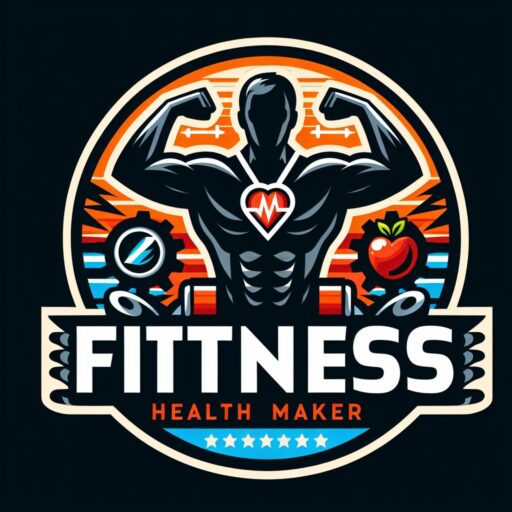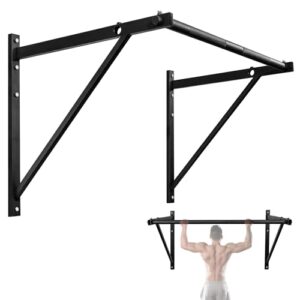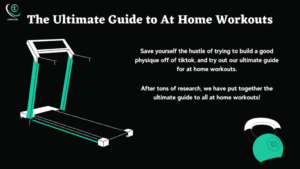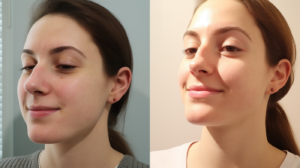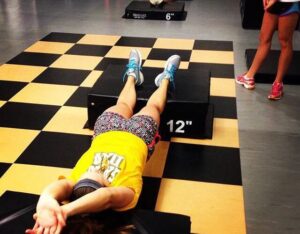Flexibility and mobility training enhances joint range of motion and muscle elasticity. It’s vital for overall fitness and injury prevention.
Flexibility and mobility training is increasingly recognized as a critical component of a holistic fitness regimen. Engaging in exercises that improve flexibility and enhance the range of motion in joints, contributes substantially to a better quality of life. These practices not only aid in athletic performance but are also essential for day-to-day activities by reducing the risk of injury and improving posture.
By incorporating stretches, dynamic movements, and specific mobility drills, individuals can maintain or even improve their movement patterns. This type of training is suitable for all ages and fitness levels, making it an accessible way to preserve the body’s ability to move freely and with less discomfort. As individuals seek to achieve a balanced and sustainable approach to fitness, incorporating regular flexibility and mobility routines has become a staple in many fitness programs.
Flexibility Vs. Mobility: Clarifying The Concepts
In the journey to peak physical health, flexibility and mobility stand as two essential elements of fitness. Though often used interchangeably, they refer to different aspects of movement and body function. Gaining clarity on these terms will not only enhance your workouts but also reduce injury risk and improve performance.
Defining Flexibility
Flexibility is the capacity of your muscles to stretch. It is the range your muscle fibers can elongate during a moment of stillness, like reaching down to touch your toes. Flexibility is vital, but it’s only part of the picture.
- Passive in nature
- Dependent on muscle length
- Improved through static stretching
Understanding Mobility
Mobility, on the other hand, is how your joints move during activity. Think of it as flexibility in motion—a combination of muscle elasticity, joint structure, and the nervous system. Good mobility means you can perform movements without restriction.
- Active dynamic range of motion
- Supports functional movements
- Involves joints, muscles, and the nervous system
Comparing Impact On Fitness
Flexibility and mobility impact your fitness in different ways. Here’s a brief comparison:
| Flexibility | Mobility |
|---|---|
| Allows for greater stretch and less tension in muscles. | Enables smoother, controlled movements during exercise. |
| Improves posture and reduces the chances of muscle imbalances. | Directly relates to performance in various sports and exercises. |
| Reduces risk of strains and injury in daily life and static activities. | Increases efficiency and effectiveness of dynamic movements. |
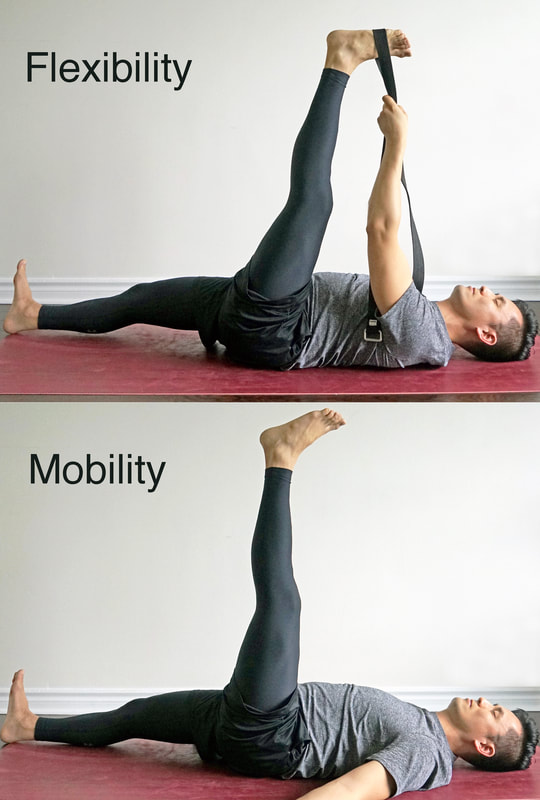
Credit: www.warneryoga.com
The Importance Of Flexibility And Mobility Training
Flexibility and mobility training are key components of a well-rounded fitness routine. These elements enhance movement and reduce the risk of injury. Every age group benefits from flexibility and mobility exercises. The training improves quality of life and daily physical performance. Let’s delve deeper into their significance under several key aspects.
Injury Prevention And Recovery
Regular flexibility and mobility training are crucial for injury prevention. It helps prepare the body for the physical stresses of daily activities and sports. These exercises improve muscle elasticity and joint range of motion. As a result, the body can handle sudden movements and stresses with less risk of injury. Recovery after an injury is also supported through targeted flexibility exercises. They aid in healing and reduce recovery time. By maintaining a consistent routine, individuals can enjoy a more resilient body.
Improved Performance In Sports And Everyday Life
Increased flexibility and mobility lead to better athletic performance. Athletes can achieve greater power and precision. Everyday tasks become easier and more efficient as well. Simple activities like tying shoelaces or reaching for a high shelf no longer cause strain or discomfort. Individuals working on flexibility and mobility often see an overall improvement in their body coordination and balance.
Enhanced Joint Health And Posture
Joint health benefits significantly from flexibility and mobility exercises. They promote healthy synovial fluid circulation, reducing joint pain and stiffness. Proper training can also correct imbalances in the body that contribute to poor posture. Over time, maintaining good flexibility helps to support a stronger, well-aligned spine. This leads to an upright posture, reducing the likelihood of back pain and other postural issues.
| Benefits | How They Help |
|---|---|
| Injury Prevention | Enhances muscle elasticity and joint motion range |
| Improved Performance | Boosts athletic ability and simplifies daily tasks |
| Joint Health | Promotes circulation and reduces stiffness |
Consistent practice is key to reaping these benefits. Even a few minutes a day can lead to noticeable improvements. Let’s take the next steps towards a more flexible and mobile life.
Building A Solid Foundation: Starting With Flexibility
Flexibility is the cornerstone of every effective movement. Starting a fitness journey with a focus on flexibility lays the groundwork for increased mobility and performance. Understanding and practicing flexibility exercises prevents injuries and enhances the body’s ability to move freely and efficiently. A flexible body is better equipped to take on advanced exercises and daily activities.
Stretching Techniques And Practices
Effective stretching is essential for developing flexibility. Several techniques improve range of motion and prevent stiffness. Beginners should engage in dynamic stretches to warm up muscles and static stretches after workouts for cooling down.
- Dynamic stretching: Involves active movements that stretch the muscles without holding the position.
- Static stretching: Involves extending a muscle and holding it in the same position for a period of time.
- PNF stretching: Proprioceptive Neuromuscular Facilitation combines passive stretching and isometric stretching to improve flexibility.
Frequency And Duration Of Flexibility Exercises
Consistency is critical for building flexibility. Incorporating stretching into your daily routine yields better results.
| Stretching Type | Frequency | Duration |
|---|---|---|
| Dynamic | Daily | 5-10 minutes |
| Static | 3-4 times a week | 10-30 seconds per stretch |
| PNF | 1-2 times a week | 10-15 seconds per contraction |
Monitoring Progress And Setting Goals
Tracking your flexibility progress motivates you and highlights your improvements. Set realistic goals to stay committed.
- Assess initial flexibility: Note your starting point with simple tests like touching your toes.
- Set specific goals: Aim for achievable milestones like holding a stretch 10 seconds longer.
- Record progress: Keep a journal or use apps to monitor your advancements.
- Update goals: As flexibility improves, challenge yourself with new targets.

Credit: www.everydayhealth.com
Advancing To Mobility: Exercise And Workout Incorporation
Embarking on a journey to enhance mobility through exercise is not just about being able to touch your toes. It’s about cultivating a body that moves freely and without pain. This section explores the incorporation of various exercises and workouts that target your body’s range of motion, joint stability, and overall mobility. Let’s dive into the methods that will help you float through your day with grace and strength.
Dynamic Movements For Range Of Motion
Dynamic movements are exercises that involve movement and are performed with a controlled speed. These exercises warm up the muscles and joints, making them more flexible. They are crucial for improving range of motion. Here are some dynamic exercises.
- Leg swings: Stand tall and swing one leg forward and backward.
- Arm circles: Extend your arms and make big circles in both directions.
- Lunges with a twist: Step forward into a lunge and add an upper-body twist.
Strength Training For Joint Stability
While flexibility is about stretching and lengthening muscles, stability is the strength that supports the joints. Strength training exercises help in preventing injuries. Strong muscles keep joints in place. Here are strength exercises for stability.
| Exercise | Area Targeted | Repetitions |
|---|---|---|
| Squats | Legs and Hips | 8-12 |
| Push-ups | Chest and Shoulders | 8-12 |
| Planks | Core Stability | 30-60 secs |
Using Tools And Equipment To Enhance Mobility
Certain tools and equipment can boost your mobility training. They provide resistance, support, and help target specific areas. Let’s look at some helpful tools.
- Resistance bands: Introduce resistance to stretches and strength exercises.
- Foam rollers: Roll out tight muscles and improve blood flow.
- Yoga blocks: Support and deepen stretches during yoga practice.
By integrating these exercises and tools into your routine, you’ll not only improve your mobility but also enhance your overall well-being. Remember, progress takes time and consistency is key.
Designing A Balanced Training Routine
Getting fit is not just about lifting weights or running fast. Your body needs a mix of activities that improve both flexibility and mobility. A balanced training routine enables your muscles and joints to work at their best. It reduces injury risk and enhances overall performance. Design the right mix, and you will take your fitness to new heights.
Creating A Customized Flexibility And Mobility Plan
Flexibility and mobility form the foundation for any balanced fitness routine. To start, assess your body’s strengths and weak spots. Are your hamstrings tight? Do your shoulders lack a full range of motion? A customized plan targets these areas.
- Map your current flexibility level with a series of stretches to understand your baseline.
- Include dynamic stretches for warm-up, like arm circles and leg swings.
- Static stretches post-workout help in recovery.
- Yoga and Pilates classes add variety and focus on core strength.
Integrating Other Fitness Elements
Your body craves variety. Other fitness elements keep your muscles guessing and improve overall health. Let’s bring strength, cardio, and balance into the mix.
| Day | Activity |
|---|---|
| Monday | Strength Training + Flexibility Work |
| Wednesday | Cardio Session + Mobility Exercises |
| Friday | Balance Challenge + Relaxing Stretch |
Alternate these elements throughout the week for a plan that keeps your body progressing.
Adapting Workouts To Individual Needs And Limitations
Every body is unique. Adjust workouts to match personal needs. A 20-year-old sprinter has different requirements from a 50-year-old yogi. Adapt the intensity, duration, and type of exercises accordingly.
- Identify any physical restrictions like joint pain or past injuries.
- Choose low-impact options like swimming or cycling if needed.
- Start slow and gradually increase the challenge over time.
Listen to your body’s signals and adjust the workouts as necessary. This ensures progress without pushing too hard.
Overcoming Challenges And Plateaus
Even the most dedicated athletes hit roadblocks in flexibility and mobility training. Overcoming challenges and plateaus is vital to keep progress steady. This part of the journey can be tough, but various strategies and tips can help you push through these obstacles.
Addressing Common Setbacks In Flexibility Improvements
It’s normal to face setbacks when working on flexibility. The key is not to get discouraged. Here’s a list of common obstacles:
- Lack of consistency – Skipping sessions can reverse gains.
- Ignoring pain signals – It can lead to injury.
- Plateaus – They often happen, but don’t mean you should give up.
Confront these challenges with regular practice, respecting your body’s limits, and mixing up your routine to prevent plateaus.
Strategies For Continual Mobility Advancements
When it comes to keeping mobility gains on the rise:
- Vary your exercises – Different moves target different muscle groups.
- Incorporate active recovery – It helps maintain motion.
- Use proper technique – It’s crucial for effective stretching.
Keep a log of your progress to see what works and adjust as needed. A well-rounded plan and consistency are your best allies.
Knowing When To Seek Professional Guidance
Know your limits and seek help if you:
| Sign | Action |
|---|---|
| Hit a long-lasting plateau | Consult a coach or therapist |
| Experience sharp or persistent pain | Visit a healthcare professional |
| Feel unsure about technique | Get a trainer’s advice |
Professional guidance can offer personalized strategies to break through plateaus and prevent injury.

Credit: www.nutrisense.io
Frequently Asked Questions Of Flexibility And Mobility Training
What Is Flexibility Training?
Flexibility training involves stretching exercises designed to increase the range of motion in joints and lengthen muscles, enhancing movement and reducing the risk of injury.
How Does Mobility Training Benefit You?
Mobility training helps improve joint function, enhances athletic performance, and can reduce pain associated with stiff or immobile joints.
What’s The Difference Between Flexibility And Mobility?
Flexibility refers to the passive stretching of muscles, while mobility is the ability to move joints actively through their full range of motion.
Can Flexibility Be Improved At Any Age?
Yes, people of all ages can improve their flexibility with consistent, appropriate stretching and conditioning exercises.
How Often Should You Train For Flexibility?
Ideally, incorporate flexibility exercises into your routine at least 3-5 times per week to see significant improvements.
What Are Basic Flexibility Exercises For Beginners?
Basic exercises include hamstring stretches, shoulder stretches, and gentle yoga poses, perfect for building a foundation of flexibility.
Conclusion
Embracing flexibility and mobility training is key to enhancing physical health and overall well-being. By integrating these practices into your routine, you’re investing in a more active, pain-free lifestyle. Don’t sideline your body’s potential—start stretching towards a more limber future now.
Your journey to optimal movement awaits.
